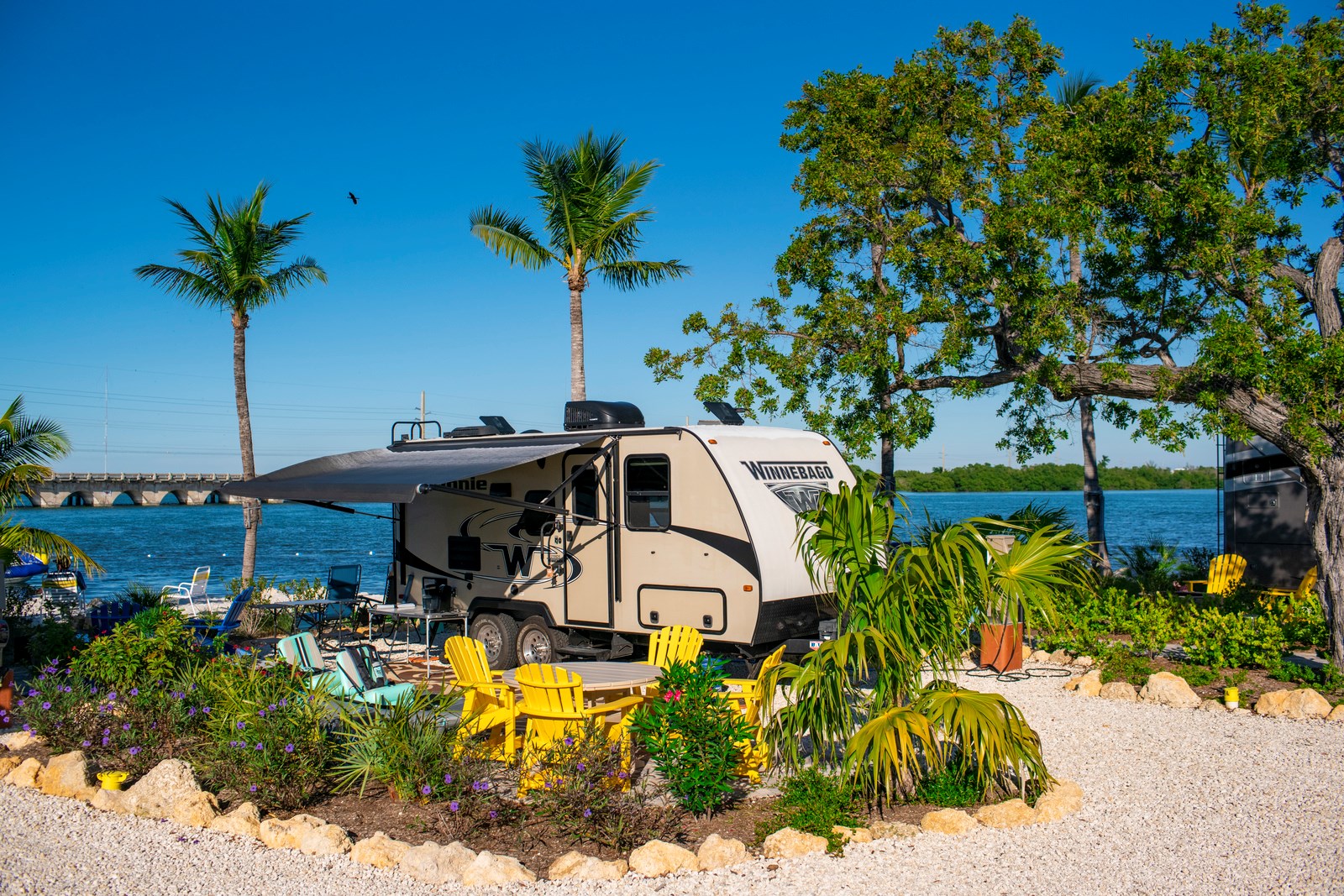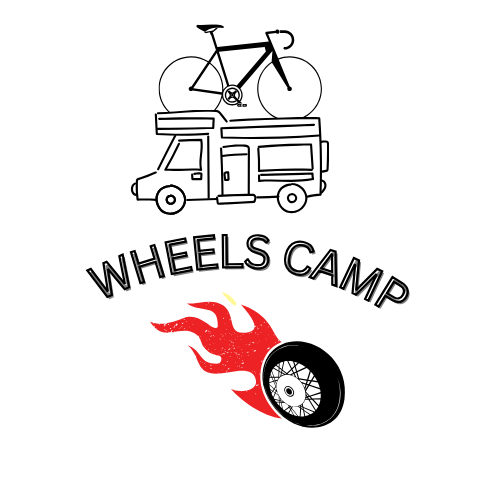Suggestions for keeping your camper warm during winter camping include insulating the walls and windows, blocking any drafts, using thermal curtains, and heating it with a portable heater or electric blanket.

Credit: koa.com
Insulating The Camper
When camping during the winter season, it’s essential to ensure that your camper is well-insulated to keep you warm and comfortable. Insulating the camper not only helps to retain heat but also prevents cold drafts from seeping in. In this section, we will discuss different ways to insulate your camper effectively for winter camping.
Windows And Doors
Windows and doors are common culprits for heat loss and draftiness in campers. Taking steps to insulate them is crucial to keep the cold air out. Here are a few suggestions to help you insulate your windows and doors:
- Window Insulation Film: Applying a window insulation film is a cost-effective way to reduce heat loss. This thin plastic film can be easily attached to the interior side of the windows using double-sided tape and then heated with a hairdryer to create a tight seal.
- Weatherstripping: Applying weatherstripping around windows and doors can help seal any gaps and prevent cold air from entering your camper. This self-adhesive foam strip is easy to install and provides effective insulation.
- Thermal Curtains: Hanging thermal curtains over your camper windows adds an extra layer of insulation. These curtains are specially designed with thick, insulating materials to keep the warmth inside and cold air outside.
Flooring And Walls
Properly insulating your camper’s flooring and walls can significantly contribute to maintaining a warm and cozy interior. Consider the following insulation options:
- Underfloor Insulation: Installing underfloor insulation, such as fiberglass batts or rigid foam boards, helps prevent heat loss through the floor. These materials provide a barrier against the cold ground, keeping your feet warm.
- Wall Insulation: Adding insulation to the walls of your camper can effectively retain heat. Options like spray foam insulation or insulating foam boards can be fitted between studs or applied to the interior walls, helping to reduce heat transfer and drafts.
Roof
Insulating the roof of your camper is another essential step in winterizing your camping experience. Consider the following methods:
- Spray Foam Insulation: Using spray foam insulation on the interior side of your camper’s roof helps create an airtight barrier. This insulation method fills in any cracks or gaps and provides excellent thermal insulation.
- Reflective Insulation: Installing reflective insulation, such as foil-faced insulation boards, beneath the roof can help reflect heat back into your camper, preventing heat loss through the ceiling.
By insulating your camper’s windows and doors, flooring and walls, and roof, you can significantly improve its ability to retain heat and keep you warm during winter camping trips. Take the necessary steps to ensure your camper is properly insulated, and enjoy a cozy and comfortable camping experience even in the coldest temperatures.

Credit: www.winnebago.com
Heating Options
Explore the various heating options available to ensure a cozy and comfortable experience. Upgrade your camping gear with effective heating solutions for a memorable winter adventure.
When it comes to winter camping, staying warm inside your camper is crucial for a comfortable and enjoyable experience. Thankfully, there are several heating options to keep you cozy during those cold winter nights. In this section, we will explore three popular choices: Electric Heaters, Propane Heaters, and Wood Stoves.
Electric Heaters
Electric heaters are a convenient and efficient way to warm up your camper while camping in the winter. These heaters, powered by electricity, are versatile and easy to use. They come in various sizes and designs, allowing you to choose the one that best fits your needs and available space.
Some electric heaters even have built-in thermostats and timers, allowing you to control the temperature and save energy. When using an electric heater in your camper, it’s important to consider power consumption. Ensure that your camper’s electrical system can handle the wattage of the heater you plan to use. Additionally, select a heater with safety features such as overheating protection and tip-over shut-off. Remember to always follow the manufacturer’s guidelines and never leave a heater unattended.
Propane Heaters
Propane heaters are another popular choice for keeping your camper warm during winter camping. These heaters use propane gas as fuel to generate heat. They are portable and can be easily moved around your camper as needed. Propane heaters come in various sizes and types, including radiant propane heaters and catalytic propane heaters.
Radiant propane heaters emit direct heat, warming up the area around them quickly. They are suitable for smaller spaces and well-insulated campers. On the other hand, catalytic propane heaters produce a more diffused heat, making them ideal for larger campers or those with less insulation. Regardless of the type you choose, propane heaters are efficient and produce a steady source of heat.
When using a propane heater, it’s important to ensure proper ventilation. Propane heaters produce carbon monoxide, so make sure your camper is adequately ventilated to avoid health risks. You should also have a carbon monoxide detector installed in your camper for added safety.
Wood Stove
For those seeking a more traditional and rustic heating option, a wood stove can be a fantastic choice. Wood stoves provide radiant heat and create a cozy, homely ambiance inside your camper. They utilize wood as fuel, making them ideal for campers who enjoy gathering firewood and experiencing the warmth of a crackling fire. Installing a wood stove in your camper requires careful planning and preparation. You need to ensure proper insulation and ventilation to prevent any fire hazards. It’s important to follow the manufacturer’s instructions for installation and maintenance. Additionally, always have a fire extinguisher nearby and take precautions to prevent accidents.
Managing Condensation
Keep your camper warm during winter camping by managing condensation. Reduce moisture buildup by using ventilation, insulation, and dehumidifiers.
When camping in your camper during the winter, one of the challenges you may face is condensation. This build-up of moisture inside your camper can lead to discomfort, mold growth, and even damage to your belongings. Fortunately, there are several effective ways to manage condensation and keep your camper warm and cozy. In this section, we will discuss two methods that can help you combat condensation: ventilation and using moisture absorbers.
Ventilation
Proper ventilation is crucial for reducing condensation in your camper. When the air inside your camper becomes too humid, it can lead to condensation on windows, walls, and ceilings. Opening windows or roof vents allows fresh air to circulate and helps to remove excess moisture. Additionally, using an exhaust fan while cooking or bathing can also help to reduce humidity levels inside your camper.
Using Moisture Absorbers
Another effective way to manage condensation is by using moisture absorbers. These small devices are designed to absorb excess moisture from the air, helping to prevent condensation and dampness inside your camper. There are several types of moisture absorbers available, including silica gel packs, dehumidifying buckets, and electric dehumidifiers. Place these in areas prone to condensation, such as near windows or in closets, to keep the air dry and minimize the risk of moisture-related issues.
Considering External Insulation
Considering external insulation is a smart solution for keeping your camper warm during winter camping. It helps to maintain a comfortable temperature inside while protecting against the cold weather outside.
During winter camping, it is crucial to ensure that your camper remains warm and cozy. One effective way to achieve this is by considering external insulation. By adding an extra layer of insulation around your camper, you can minimize heat loss and keep the cold air out. In this section, we will explore two important aspects of external insulation: skirting and insulating water lines.
Skirting
Skirting is an excellent method to provide insulation to the bottom of your camper, preventing cold drafts from seeping in. By enclosing the space beneath your camper, you create a barrier that traps heat and keeps the cold air out. Skirting can be achieved using various materials such as rigid foam boards, insulated panels, or heavy-duty vinyl. These materials are easy to install and provide an effective shield against the winter chill.
Insulating Water Lines
During winter camping, your water lines are vulnerable to freezing due to the low temperatures. Insulating your water lines is crucial to prevent any damage caused by freezing and ensure a continuous water supply. To insulate your water lines, you can use foam pipe insulation. This insulation material wraps around your water lines, protecting them from the cold and maintaining the temperature of the water inside. Remember to pay extra attention to exposed sections of the water lines, such as those that pass through exterior compartments or under the camper.
Overall, considering external insulation is a smart step to keep your camper warm during winter camping. By skirting your camper and insulating the water lines, you can create a barrier against the cold air and minimize heat loss. These simple yet effective measures will make your winter camping experience more comfortable and enjoyable.
Conclusion
To ensure a comfortable winter camping experience in your camper, it is crucial to take the necessary steps to keep warm. By insulating your vehicle, using appropriate bedding, and employing efficient heating methods, you can enjoy cozy nights while embracing the beauty of winter.
Remember, prevention is key, so address any potential drafts or leaks before hitting the road. With these suggestions, you’ll stay warm and make the most of your winter camping adventure. Stay cozy and happy camping.

